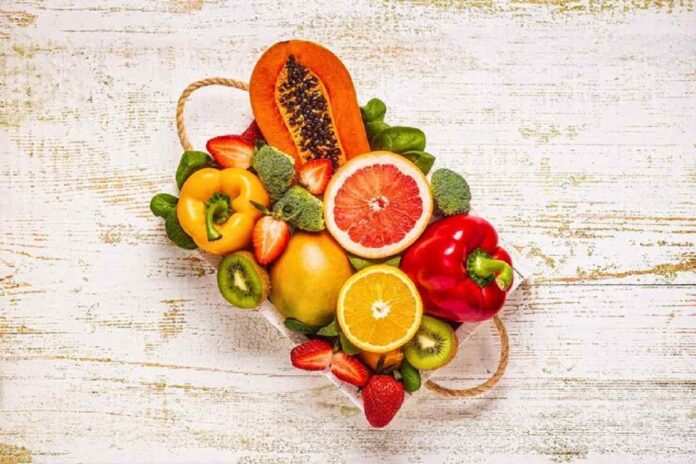To get your fill of vitamin C every day, think beyond boxed orange juice or a multivitamin. There’s a wide variety of great sources of vitamin C in the produce department and at the farmers’ market. An adequate intake of vitamin C from these foods may help protect against cancer and possibly other diseases. Let the delicious options surprise you!
Table of Contents
1. Check Out Broccoli
It’s a powerhouse of nutrition! One cup of chopped broccoli supplies more than the daily requirement of vitamin C (the RDA is 75 milligrams a day for women, 90 for men). It also supplies beta carotene (and other carotenoids), niacin, calcium, thiamin, vitamin E and 25 percent of your daily fiber needs.
2. Pick Colorful Peppers
The brighter the color, the more nutrients. One 4-ounce green pepper has 100 milligrams of vitamin C, twice as much (ounce for ounce) as an orange. Red and yellow peppers have even more: 150 milligrams in 4 ounces of red, 210 in yellow. Green peppers also supply some beta carotene, but the amount increases greatly as a pepper matures and turns red or yellow.
3. Catch a Cantaloupe
It’s the most nutritious melon, with a healthy dose of vitamin C. One cup (cubed) or a six-ounce slice supplies 60 milligrams of vitamin C—nearly the daily RDA. Cantaloupe also contains more than the recommended daily intake of vitamin A, in the form of beta carotene.
4. Eat Kiwifruit
It contains more vitamin C per ounce than an orange and more potassium per ounce than a banana. Additionally, it contains a little amount of folate, vitamin E, and lutein, a carotenoid that may support eye health. Additionally, this fruit with fuzzy skin is high in fibre.
5. Try These Other Fruits and Veggies
Looking for more options? Have delicious citrus with breakfast, such as grapefruit or tangerines. Snack on vitamin C-rich berries such as strawberries, blackberries and raspberries. And try tropical fruits such as mango, pineapple or papaya, which are also great sources of C. Choose veggies that supply a healthy dose of vitamin C, too: asparagus, cabbage, cauliflower, Brussels sprouts, collards, kale and mustard greens.
6. Don’t Overlook Oranges
Of course, oranges are still a great source of C—with about 75 milligrams in a 5-ounce fruit. Plus, whole, unpeeled oranges hardly lose any vitamin C over time, since no oxygen comes in contact with the edible part. Even after a day or two of sweltering weather, an orange loses less than 10 percent of its C. If you keep the fruit cool, it will dry out or rot long before it loses a significant amount of vitamin C.




